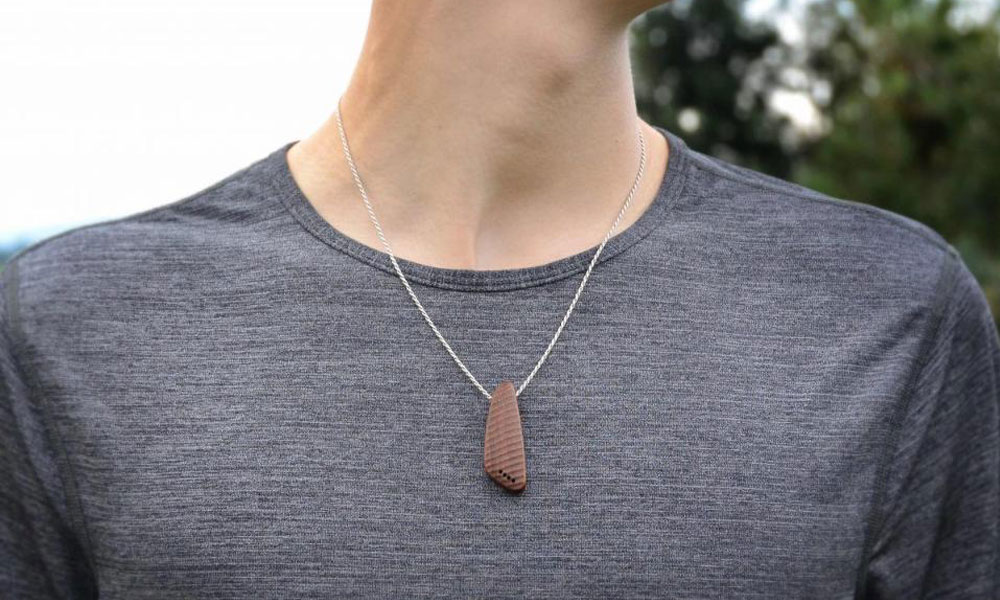Strategy October 16, 2017
Q&A: Crafting Smart, Stylish Wearable Tech
Getting people to take healthy action in their lives is important, says Chalisa Prarasri, CEO and cofounder of Opter. That’s the idea behind her company’s Pose, a smart bamboo pendant that tracks activity and helps improve posture. We spoke with Prarasri about Pose and her thoughts about wearable tech in general.

Q: Can you tell us a little about your background?
Chalisa Prarasri: I’m the CEO and cofounder of Opter. My background is actually in neuroscience, and I spent about four years trying to change the world through science before realizing that it was too slow for me. I’m impatient and ambitious, and I wanted to make a difference faster, so when I left UCLA I decided to start a company. While serving as editor-in-chief of UCLA’s health magazine, I learned a massive amount about the science of health, and realized that educating people through writing wasn’t enough to make people healthier. You can tell people what’s healthy all you want, but getting them to take action on that information is an entirely different matter. I’m a huge tech geek, so to me, the obvious solution was to build tech that would do the job better.
Q: How did the idea for Pose come about?
CP: We actually started by building a really simple technology, a tiny computer that communicates with a smartphone and senses motion. We were going to use it to make a smart toothbrush or something like that. That idea was quickly abandoned when we realized what we could do with the tech if we stuck it in a piece of jewelry and added a few sensors. My husband has always had posture issues, and he had the idea of making something that could fix posture. But I was thinking a bit bigger. What if we could make a better fitness tracker? At that point I’d gone through so many of them, and they had all been disappointing. I was really trying to create the ideal wearable that I’d actually want to wear.
First and foremost, it had to look good. We wanted it to be unisex and modern, so we went with a dog tag-style design. Mike, our chief scientist, made the crucial suggestion that we make it from wood (this later turned into bamboo). Then Dave, our chief design officer, made the beautiful design. In thinking about what features to give it aside from posture, I thought about the pillars of health: activity, nutrition, sleep, hydration and mental health. We decided we’d have to save hydration and nutrition for later products, but activity was obvious, given the popularity of trackers like Fitbit. We made sure to include reminders to move if you’ve been still for too long, because that’s crucial. When addressing sleep, we knew we had to be different. Simply tracking sleep and having an app poorly guess your “sleep quality” based on your movement isn’t enough to solve most people’s sleep problems. So much of sleep problems have to do with simple daily habits — when you sleep, when you turn off the lights, and what you do before sleeping can make a huge difference. That’s why Opter’s sleep tracking focuses on teaching people the ideal behaviors for restful sleep, not making graphs. And then there’s UV — so under-appreciated, but so important. In a world where each generation lives longer than the last, cancer is a very real concern. I decided we should include UV whether or not people wanted it because it can make such a big difference.

Q: What were the difficulties in making Pose?
CP: There are too many to count. We had to cram a lot of tech into a very tiny space, and we had to somehow give it a great battery life. And we had to do it without much money. That was probably the hardest part. For software startups, it’s a bit easier to go without money, but hardware is another story. My cofounders were extremely crafty in getting us to where we are today with so little capital.
Q: How much research went in to its creation?
CP: We’ve been working on this for the last two years. We’ve gone through so many iterations of the electronics and design, and we’ve succeeded at making Pose extremely small, but with an extremely good battery life. Those are a couple of the biggest challenges in the wearables world, and I’m quite proud that we were able to make something that excels at both. Pose is smaller than a thumb, as thin as an iPhone, and has a battery life of more than a week. A lot of work went into it, and it’s a pretty cool piece of tech.
Q: What do you think is most exciting about wearable tech?
CP: The possibilities! Look at how the smartphone has changed the world - the next step is clearly to integrate technology more closely with our bodies. With the rate at which technology is progressing, we’re going to be able to do such cool stuff with wearables in the coming years.
Q: Where do you see wearable tech in 10 years?
CP: Smartphones and the internet are already instinctual extensions of us. I think we’re perfectly primed to let wearables become extensions of our bodies as well. With Pose, you’re basically using wearables to enhance your self-awareness. But people will be building ways for wearables to enhance our awareness of our surroundings, or like in the case of virtual reality and augmented reality, completely change the way we interact with our surroundings and the internet. Back in 2007, we barely had smartphones. Now it’s 2017 and no one would be caught dead without their smartphone. By 2027 we’ll be wondering how we ever got along without wearables to augment our lives and health.
Q: How well do you think Pose will impact the health of its users?
CP: I think if we succeed at implementing everything we plan to with Pose, it’ll be a complete game-changer. We’re working with one of the best behavioral psychologists in the world to build something that will actually help people change their behaviors for better health. It’s not just data we care about — it’s about what we do with this data and how we use it to motivate and inform. It’ll be like having an AI wellness coach in your pocket at all times. Anyone who’s ever had a personal trainer or wellness coach can tell you how ridiculously effective that is.
Q: What obstacles do you think wearable tech needs to overcome before it can become more mainstream?
CP: Battery life and form factor are big ones. Wearables with one-day battery lives are at a disadvantage because we can only charge so many devices every night. Wearables that are ugly or big are missing a huge portion of the population because fashion is really important in the mainstream. What’s ironic is when people buy wearables to help them form new healthy habits, but they actually need to form new habits (like remembering to charge or input data) just to use the wearable. How does that even work? It doesn’t. People who are already good at forming habits get a benefit from these devices, and the people who really needed the help in the first place are left in the dust. I think the key is being completely seamless in integrating with people’s lives. That way, all they have to do is focus on their goals, instead of focusing on remembering to use the wearable.
